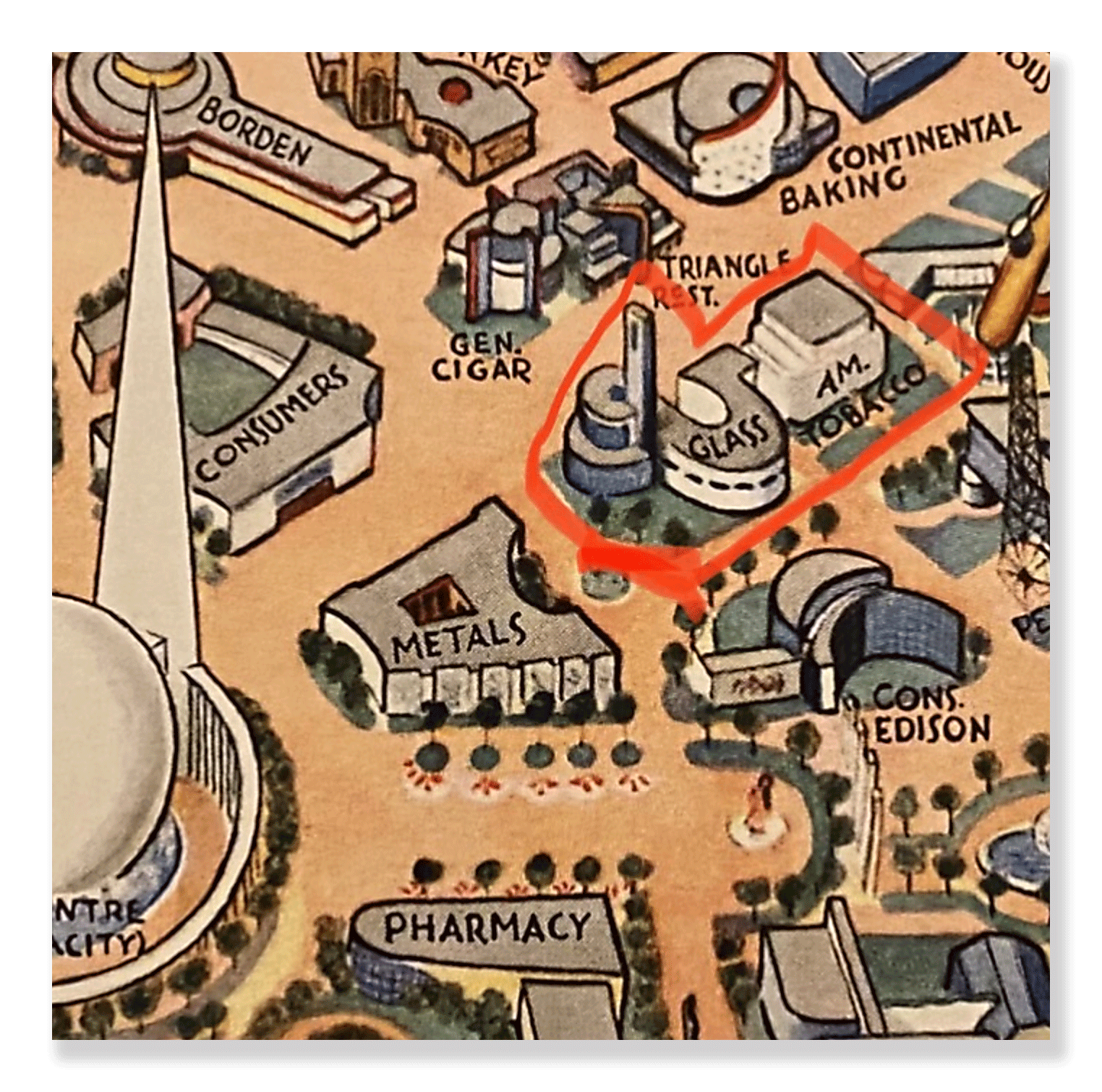
SPECIAL TO THE PCA BULLETIN
THE JOHNE PARSLEY LEGACY PROJECT
DECEMBER 14, 2018, Milwaukee, WI . . . The Johne Parsley family has initiated Great Lakes Paperweights, Inc., (GLP), a 501(c) (3) corporation based in Milwaukee, Wisconsin. The Mission of the organization is to preserve the rich history, legacy and enjoyment of fine glass paperweights through education and interaction with Midwest museums as well as work with galleries, collectors, glass artists and the general public.. READ MORE . . .
© 2022 Copyright by Great Lakes Paperweights, Ltd.

WANDERING THROUGH THE FUTURE
WELL, HERE YOU ARE, JOHNE PARSLEY, seventeen years old — and at the end of one rigorous two-day trip and at the symbolic beginning of a lifelong journey. A train for which you had no ticket has brought you and a friend 500 miles from remote Kenova, West Virginia, to the bustling metropolis of Chicago and from the old world to the new. With scant resources, you may be a bit hungry, but your real appetite is in your eyes and spirit, not your stomach.
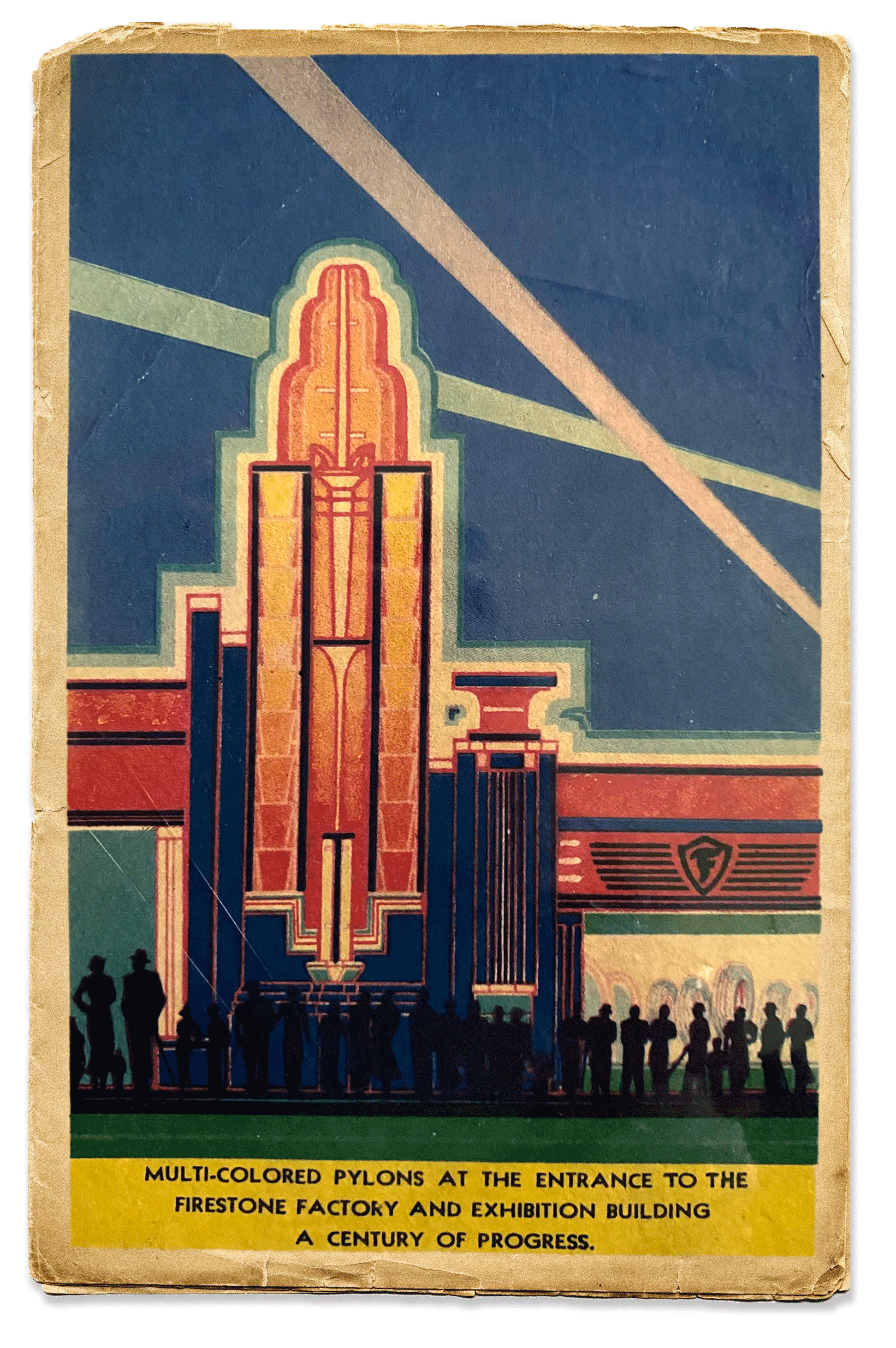

Paperweight image (above) provided by James Lefever
of the DVPCA from PCA lecture by Gary McClanahan
We’ll never know Johne Parsley’s exact thoughts as he witnessed firsthand the dawn of Modernism at the Century of Progress, the Chicago World’s Fair of 1933–34 (and a half-dozen years later at New York City’s “World of Tomorrow”) but we know he strove to get there. That sense of purpose and adventure would define his restless and creative sensibilities his entire life.
This Chicago Fair, more than most any that came before it, was geared entirely toward the future and what it would and might have to offer. Yes, there were entire displays of traditional foreign cultures and societies, but they served not only as exotic appeal but also as a foil to showcase the distinction between the picturesque primitive and the enviable modern. The stated theme was “Technological Innovation.” The motto was, “Science Finds, Industry Applies, Man Adapts.” Another text ends the quotes differently, as “…Man Conforms,” a more troubling and nuanced distinction, and probably more accurate…
The Fair championed Art Deco throughout, in some repudiation of the 1893 Fair that embodied the Beaux Arts spirit. It sprawled neatly along the Lakefront, and everywhere one looked there were wondrously streamlined and gleaming edifices made from contemporary (and cost effective) materials and gleaming metals, often sporting brilliant palettes. Color was everywhere, with twenty-four intense, official hues chosen by the great designer and artist, Joseph Urban. With an eye toward lifting the citizens’ spirits above the darkest days of the Great Depression (25% of the American workforce was unemployed in 1933), these brilliant and harmonious palettes intentionally unified the Fair environment and defined nearly all of the vast array of products and souvenirs that were being marketed including souvenir folk-art paperweights as shown, right.
There was the Midway, the main thoroughfare where over 350,000 people daily were expected to wander in search of the promise of tomorrow and the pleasures of today. In all, some accounts report that over 48 million Americans attended the festivities, exhibitions and demonstrations during the summers of 1933 and 1934. By contrast, the entire population of West Virginia was less than 2 million people in 1933. What effect might just that historic wave of humanity alone have had on our young protagonist? Just the energy and positive inclinations of so many people moving in one area, united by hope and inquisitiveness, had to be uplifting. Johne also had a specific sense of mission that likely added to his excitement and sense of purpose. Friendly factory glassmakers near his hometown had encouraged him to get to the Chicago Fair and "see the Bohemian glassblowers!" And as if to underscore the public optimism, on April 7th, in time for the Fair’s opening, 3.2% beer became legal in Chicago! (That sound you hear is Commerce flexing its muscle.) Prohibition had run its course, and by December of 1933 it was entirely repealed — though Al Capone was nonetheless on his way to Alcatraz, not for bootlegging and murder, but for conviction on tax evasion! There is a gorgeous collectable beer bottle with the Fair logo stamped in what looks to be metallic embossing. There is still a lively market for Fair collectibles to this day!
Original Chicago World's Fair postcard. Copyright 1933. The Firestone Tire & Rubber Co.
The grand Sky Ride, featured on the cover of Popular Mechanics magazine in May of 1933, was a major draw with its double-decked “rocket cars” whisking people and cars back and forth between twin steel towers 628 feet high and 2000 feet apart. There was an animatronic (and relatively small-scale) King Kong welcoming tourists at one attraction. There was a track with professional drivers putting late-model automobiles to the test. There was a smoking robot, and an evening stunt called, “Flying Projector Casts Words on a Sky Screen.” And the hit food of the Fair was… The Doughnut! At the 1933 Century of Progress, doughnuts were not just a popular fad — they were being proclaimed as the “Hit Food of the Century of Progress,” lauded as the perfect union of fresh ingredients and automated preparation. (Family lore alludes to the fact that they became a staple in Johne's diet for the rest of his life!)
And almost every event, demonstration, display, exhibition, ride, costume, and architectural structure, was presented for your edification and offered memorabilia. Memories were understandably commercialized as puzzles, coin banks, board games, stereo view cards, photo booklets, scale models, projection mold coins, catalogues, photograph albums, pencil sharpeners, and more.
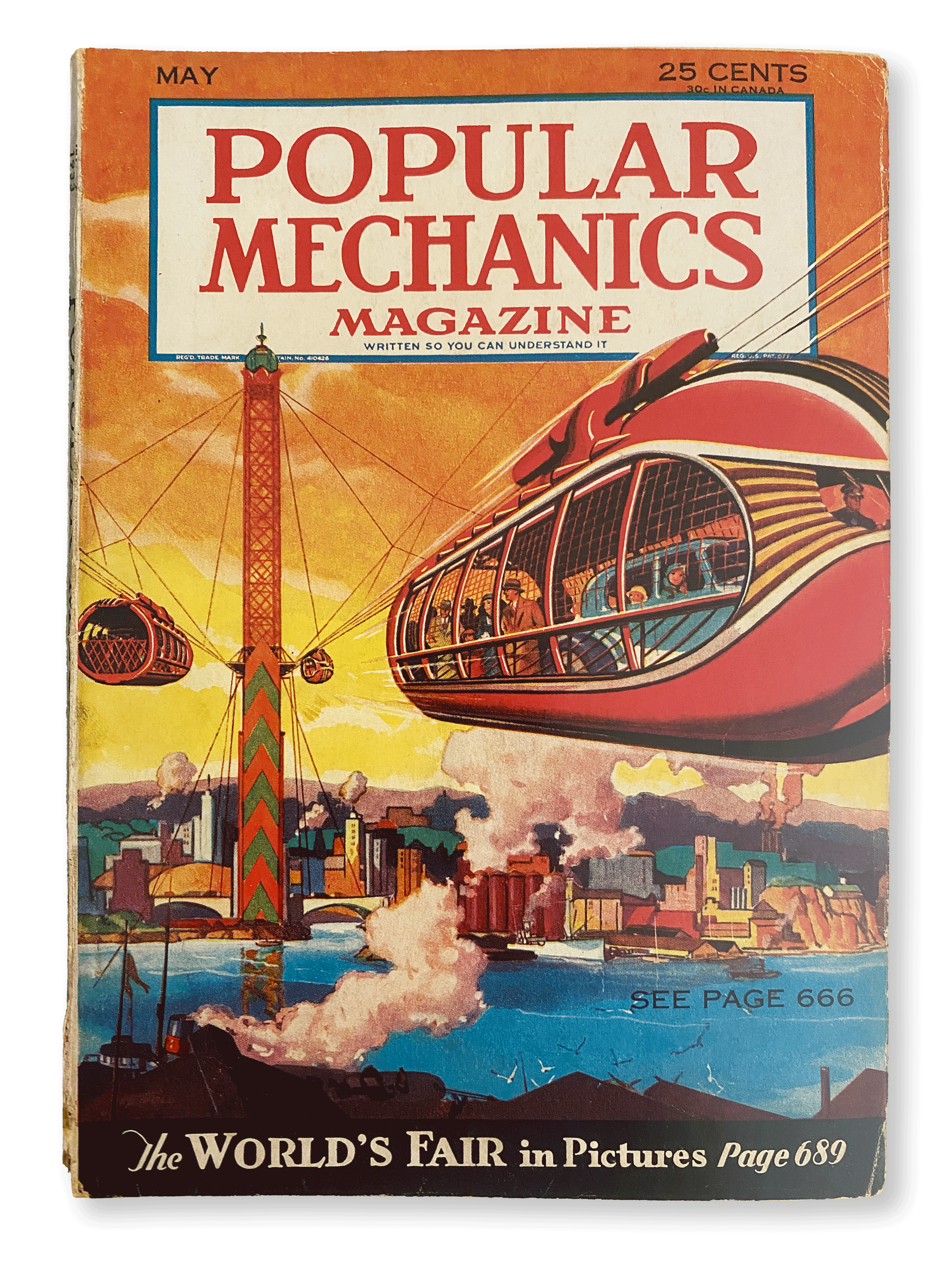
Courtesy of Paul Berlanga
However, that doesn’t diminish for a moment the great contributions the Fair offered to a nation in need of hope. (Along with the Depression, shortly before the Fair opened Adolf Hitler had been declared the Reich Chancellor of Germany.) That hope came with a swell of pride and comfort, as people witnessed new inventions and techniques for building and traveling. The two Fairs Johne attended were among his favorite shared memories, so it may be safe to assume for our purposes that there was a germination in our young protagonist that later sprouted in a multi-faceted and valued career — in the sciences and war effort, in the arts (of glass), in fatherhood, horticulture, and adventure, (most notably when obtaining a commercial pilot’s license). Obviously, Johne Parsley’s spirit held promise before he rode the rails to experience “The Giant Jewel,” as many called it, or he wouldn’t have made the journey to begin with. But there’s little doubt that such a wondrous adventure propelled him in any number of directions. This writer also thinks that Johne, known for his love of technology, science and progress, would have embraced the soon-to-appear Chicago Institute of Design, helmed by the noted educator Lazlo Moholy-Nagy, who brought to Chicago the teachings and principles of the famous Bauhaus, an avant-garde school uniting art, science, craft and modernity. Johne would have approved.
It was likely a similar story with the 1939 New York World’s Fair, although there Johne visited on better terms. Located in Flushing Meadows, in Queens, New York, it also boasted of having 44 million visitors over its two seasons. At the Fair were the Trylon and the Perisphere, the massive and troublesome (to create) geometric objects that were chosen as the twin anchors of the Fair’s Theme Center. The stated theme was “The World of Tomorrow,” changed in 1940 as World War II began, to “For Peace and Freedom.” (Johne had tried unsuccessfully to enlist in the Navy during the War but was not accepted due to an astigmatism. Instead, he worked for Wyandotte Chemical Company in Michigan under the War Powers Act.
At the Fair’s Glass Center, Johne witnessed “The Glass Blowers of the World” exhibition. He met well-known figures in the field of hot glass, witnessed demonstrations of glassblowing, and even conversed with the famous Howell family. At 22, Johne had already established his career as a chemist, and during this time he was also blowing scientific glass. He married Anne Milito in 1938, and soon thereafter their home became known to all their friends and family as "Glass Town," due to a pair of crossfires that Johne always had ready in his studio. Johne first previewed his art glass at the Fair’s House of Glass where he worked with the famed Dick Manley. According to his home-town suburban Detroit newspaper, Johne won a prize for his seven-inch-tall vertical crystal flower with seven leaves. The Home Office, his employer's corporate magazine wrote, “Mr. Parsley has gained a budding reputation through the pursuit of his hobby, several of his pieces — notably a glass tree with 13 limbs, leaves, and flowers—won prizes and much favorable comment in the House of Glass exhibit at the New York World’s Fair.” (Wyandotte Chemical Company, The Home Office, May-June 1941, Page 14.) Johne continued to fashion objets d’art for friends and family throughout this career and, later, as a paperweight maker.
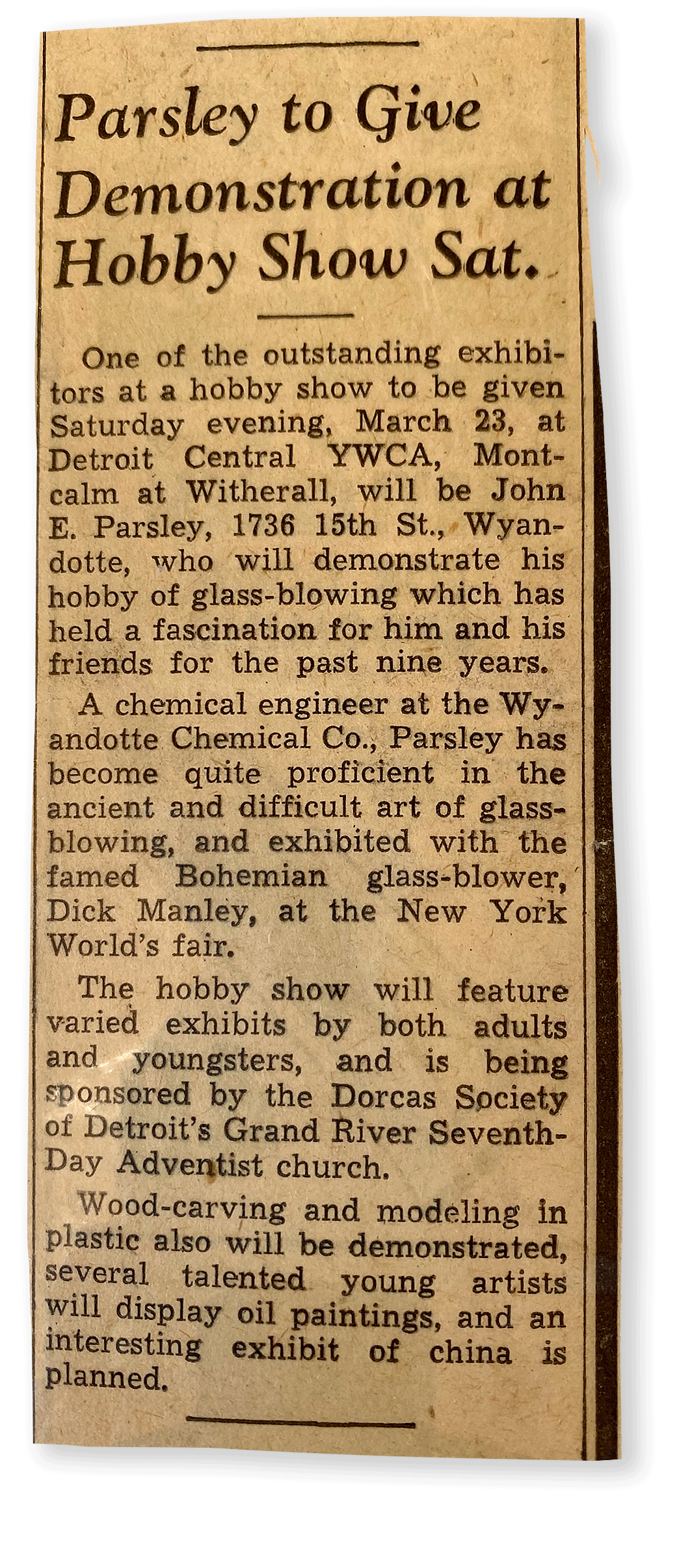
New York World’s Fair postcard courtesy Paul Berlanga
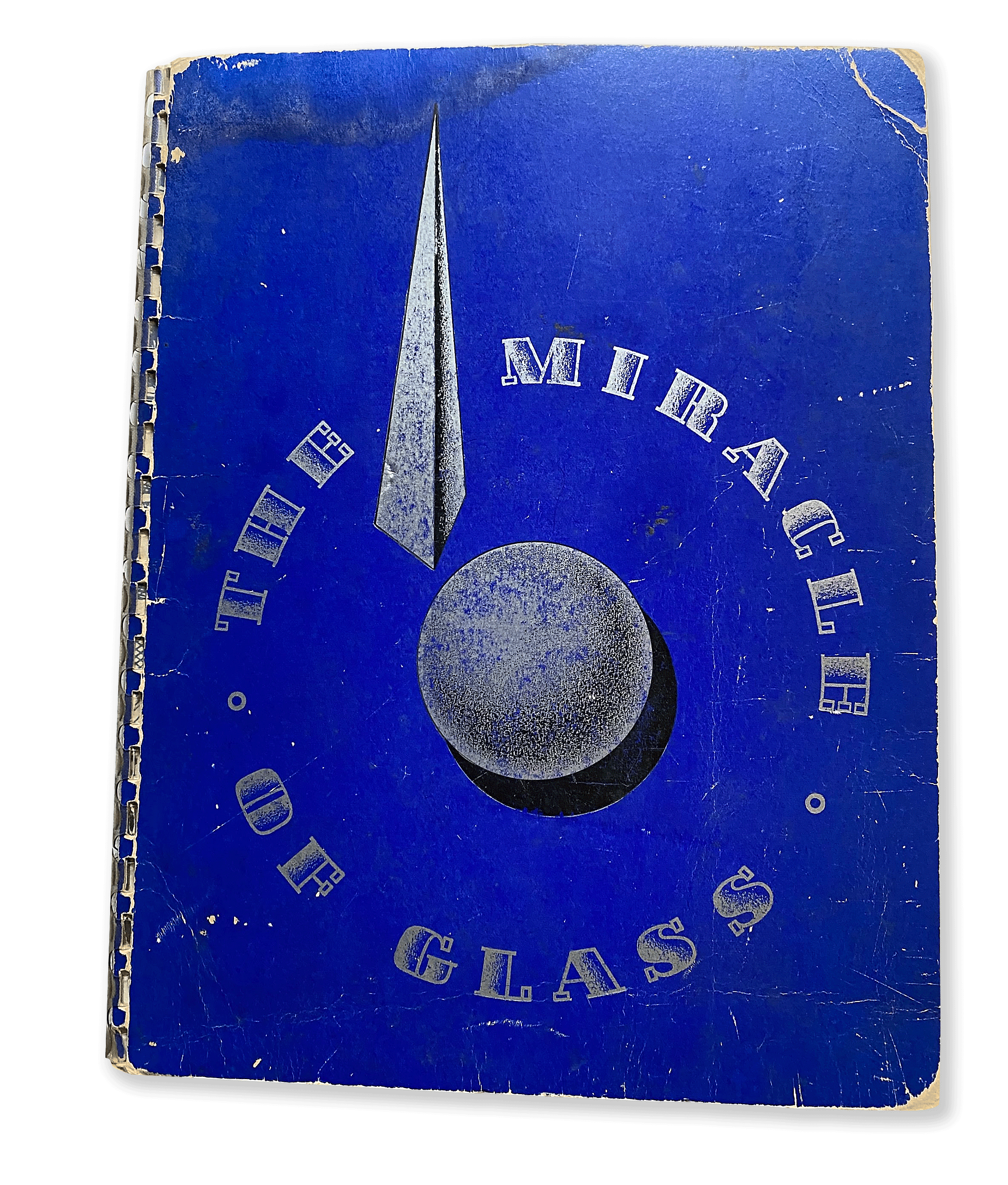

In many ways the two Fairs are a set of bookends. Each claimed over 40 million visitors, both Fairs embraced a future society shaped by exuberant advances in science and technology, and both were fronted by major American corporations and local governments eager to instill positivity, hope, and an appetite for a lifestyle and accompanying product lines to make the dream manifest. Still, this is not to say that the overall benefits didn’t strongly outweigh the commercial considerations. There was real cultural benefit in both cases.
1939/40 World's Fair Fantasy Flower. Private Collection Miracle of Glass, published by Glass Inc. ca. 1939, courtesy Parsley archive.
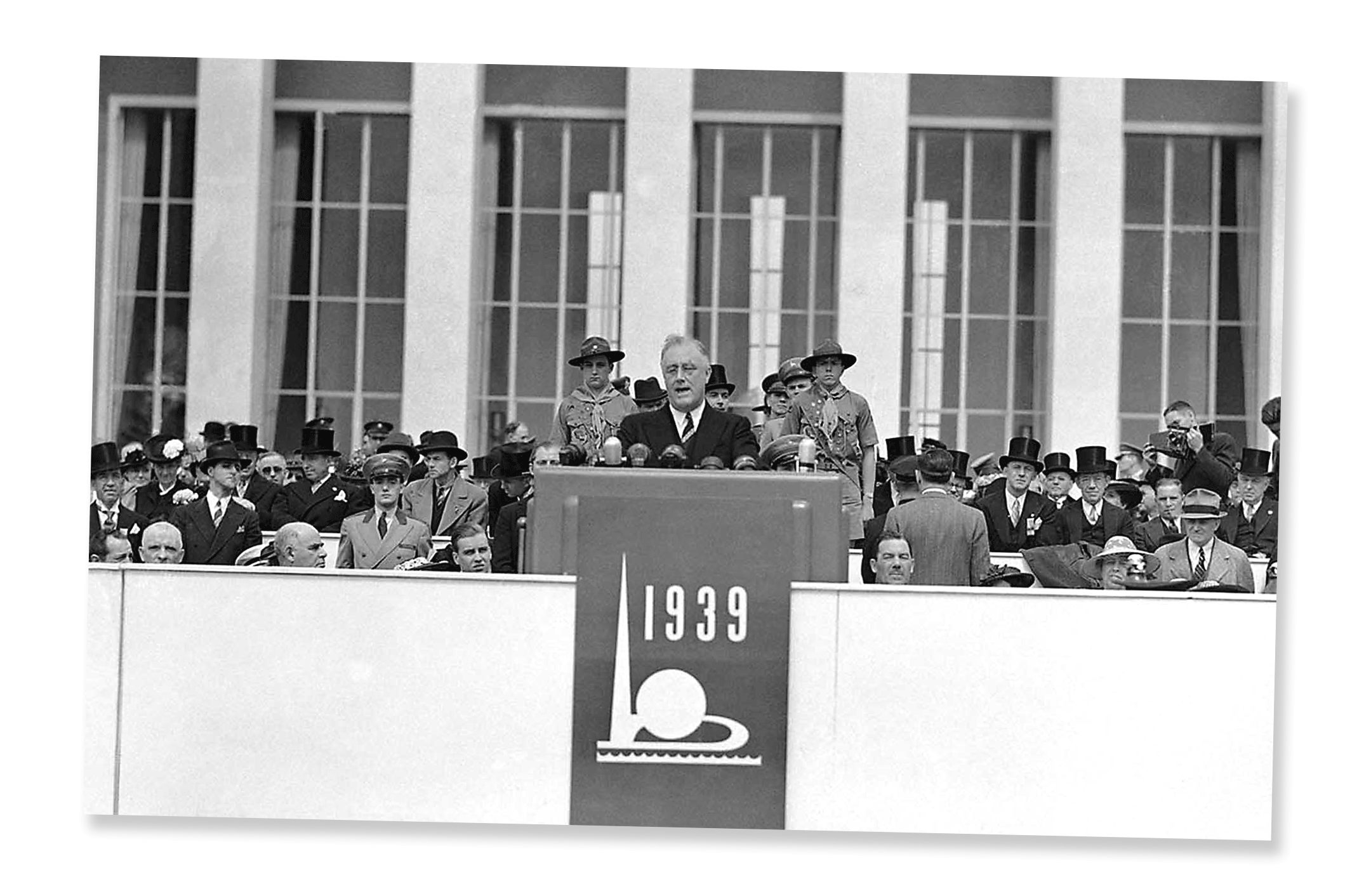
But a truly profound step into the future was taken early on at the Fair on April 30th, 1939. On that day, President Franklin Roosevelt gave the Fair’s opening address via electronic video broadcast. The world had entered the age of television. We wonder if he was there for that moment?
Did I mention that there were also exotic dancers and scantily clad female performers? Yes, the show managers knew how to round out market appeal and each Fair was well-represented exhibitions with designed to satisfy visitors’ remaining senses… There were rides and foods and displays and products to purchase. These extravaganzas must have been truly overwhelming to Americans visiting Chicago or New York City for the first time. The population of the United States was largely rural and agrarian up to the Second World War. Some might think it odd timing for the 1939 film, The Wizard of Oz, to be released into a world on the edge. (Although the original work does host a more biting socio-political subtext according to some interpretations!)
Imagine the bemused curiosity of the viewers who witnessed the Westinghouse Time Capsule, being placed deep underground with the optimistic date to be opened marked as 6939, exactly 5000 years from 1939! It contained writings by Albert Einstein, (who also gave a talk at the Fair on the topic of cosmic rays), a Mickey Mouse watch, and a pack of Camel cigarettes. (Okay, there were also samples of our common foods, millions of pages of text on microfilm, and a kewpie doll. At least they’ll know we had a sense of humor…)
There was Moto-Man, a robot that could talk, smoke and walk backwards, depending upon which reports you saw. The Fair was also the occasion for the first World Science Fiction Convention. There was a multitude of “firsts” that occurred at both Fairs that deserve separate attention as we instead try to catch up to our wandering Johne…
Flanked by Boy Scouts, President Franklin D. Roosevelt opened New York’s $160,000,000 World’s Fair with an address in which he said America has “hitched her wagon to a star of good will”, on April 30, 1939. He emphasized the United States’ desire for placid living among the countries of the world and expressed hope that the future would see a breakdown of “many barriers of intercourse” among European nations.
Library of Congress / New York Public Archives
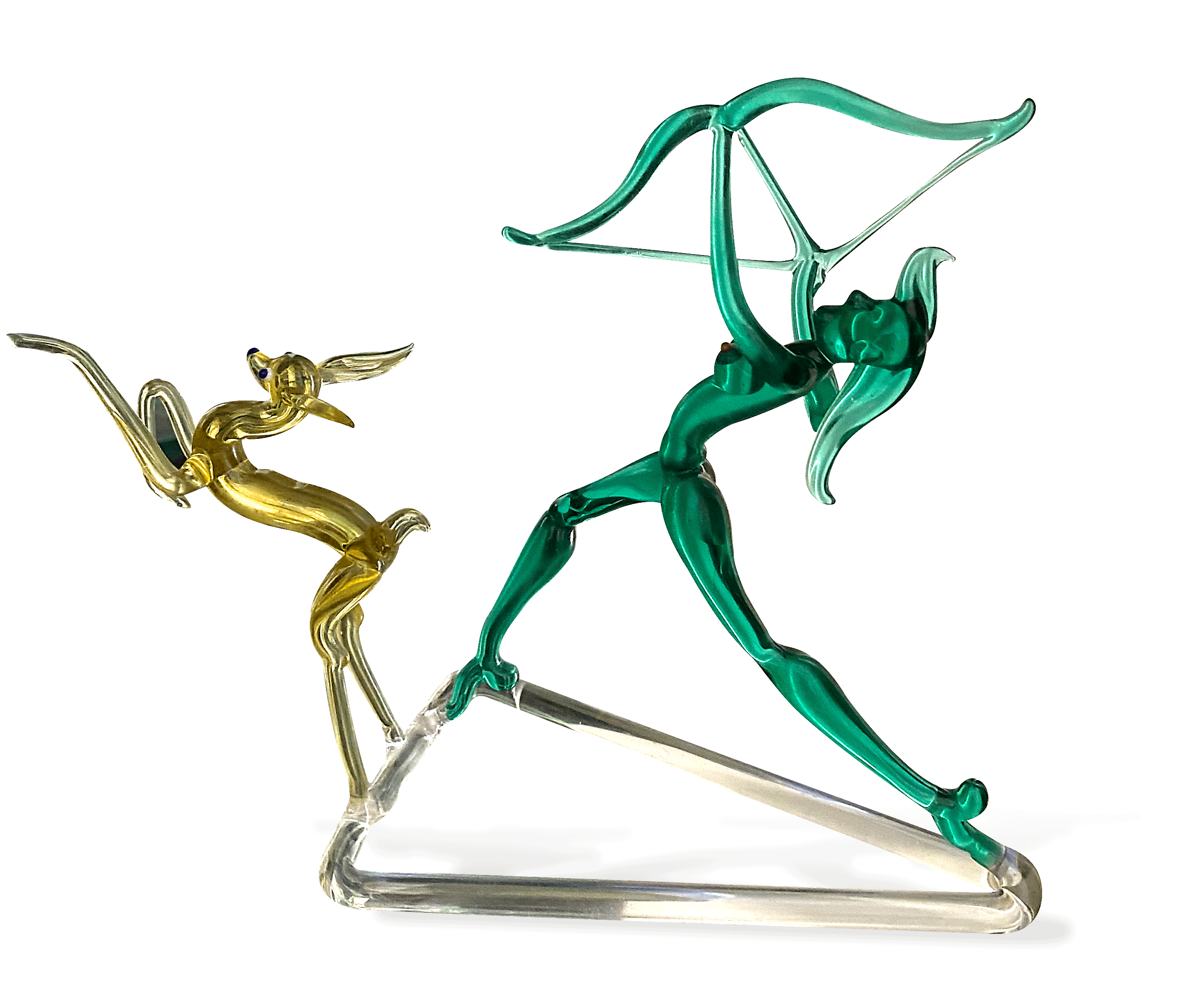
Influence drawn from the two World's Fairs are exemplified in Johne's Archer piece which pays homage to the goddess Diana, the huntress. The sinuous shapes of the piece are drawn from the fluid streamlined forms of the Moderne or Art Deco periods. Private Collection.

But regardless of that, the learned and humanist writer, Joseph Campbell, reminds us: “Nirvana is right here in the midst of the turmoil of life.” Johne Parsley, by the life he later led, seemed to already know this as he wandered the grounds of these Fairs, these two great expressions of mankind’s reach nobly extending beyond its grasp…although the Fairs would have you consider that we’re closer than we realize.
— Paul Berlanga & Joan Parsley

